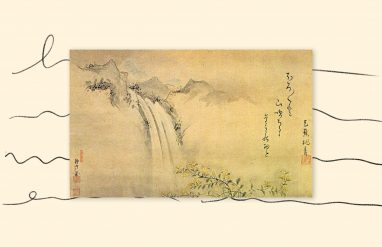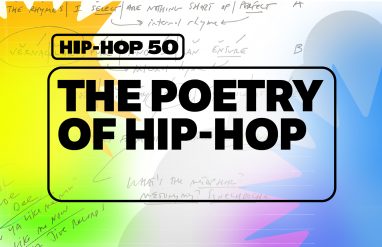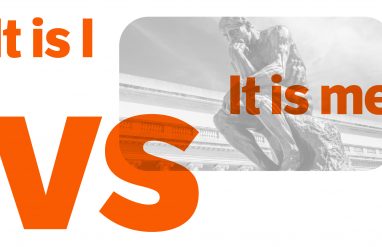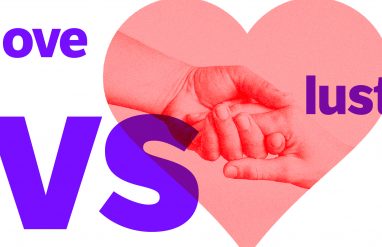When we think of point of view in the general sense, we tend to think about someone’s attitude or opinion of things: their likes or dislikes, their focus, their idea of the world. Point of view is unique, right? After all, everyone has their own perspective on things.
When talking about literary or narrative point of view, though, there aren’t nearly as many options. In fact, there are only five different types of narrative point of view:
- first-person
- second-person
- third-person omniscient
- third-person limited
- third-person objective
These points of view aren’t as unique, but they can be helpful in creating different effects in works of literature. We’ve broken down the five main types of narrative points of view for you. It’s amazing the thousands of stories authors can create with just these options.
When to use first-person point of view
Human beings can be a bit … selfish. That might be why first–person point of view is all about I, me, and mine. We like to put ourselves first.
All joking aside, first-person point of view is when the story is told from an individual point of view describing something that is happening to them. The key pronouns for first-person point of view are:
- I
- me
- my
Some popular books written in first-person point of view are the Hunger Games series, To Kill a Mockingbird, and Bridget Jones’s Diary.
Here are a few examples of first-person narration:
- On my way to the grocery store, I saw a lone glove lying in the snowbank. Wondering if it belonged to someone nearby, I picked it up and put it in my pocket.
- I felt the track underneath my feet. It was dry and rocky. I could hear the crowd cheering. I was going to win!
- My friends were all down by the river by the time I turned up with my fishing rod and a bucket. They teased me for always being the last one to arrive.
As you can see from these examples, first-person narration helps the reader relate to the character. As the reader, you become aware of everything happening in the story from the character’s perspective. It’s a powerful approach, but it can be limiting if you are trying to build a big world, like in science fiction or epics.
When to use second-person point of view
Second-person point of view is all about you. No, we aren’t trying to butter you up. What we mean is that second-person point of view is a narrative that is told from the reader’s point of view.
The key pronouns for second-person point of view are:
- you
- your
It’s generally considered a no-no to write a novel in only second-person point of view. More often, poetry or short stories might include bits of second-person point of view. Just to be clear, second-person point of view isn’t the same thing as when the author addresses the reader directly. It’s when you, the reader, seem to become part of the story. You know, like those old Choose Your Own Adventure books we all read.
Here are a few examples of second-person narrative:
- You walked to the corner, where you heard a telephone ringing in the phone booth. When you picked up the phone, there was no one on the other line.
- You always wanted to win the lottery, but you never thought it would really happen!
- There is something scary about the abandoned amusement park. Do you choose to enter anyway?
Just like the first-person perspective, second-person perspective can create a story that seems more intimate to the reader. It really puts them into the story. Second-person perspective can also create an uncanny, almost alienating, effect.
When to use third-person point of view
If you have read a narrative lately, it was most likely written in third-person point of view. In other words, it was not told from the point of view of the narrator or the reader.
The key pronouns for third-person point of view are:
- they
- them
- their
- he/she/it
- his/hers/theirs
There are three different third-person points of view. We are going to start with the most common one, third-person omniscient.
Third-person omniscient
Omniscient is a fancy word that means “all-knowing.” So, third-person omniscient point of view means that the narrative is told from the perspective of a narrator who knows the thoughts and feelings of many characters in the story. Sometimes, third-person omniscient point of view will include the narrator telling the story from multiple characters’ perspectives. Popular examples of third-person omniscient point of view are Middlemarch, Anna Karenina, and The Scarlet Letter.
Here are a couple examples of third-person omniscient narration:
- Darcy danced only once with Mrs. Hurst and once with Miss Bingley, declined being introduced to any other lady, and spent the rest of the evening in walking about the room, speaking occasionally to one of his own party. His character was decided. He was the proudest, most disagreeable man in the world, and everybody hoped that he would never come there again. (Pride and Prejudice, Jane Austen, 1813)
- Having ridden to the village of Pratz, [Kutuzov] halted … Prince Andrei felt excited, irritated, and at the same time restrainedly calm, as a man usually is when a long-desired moment comes. He was firmly convinced that this was the day of his Toulon or his bridge of Arcole. (War and Peace, Leo Tolstoy, 1869, translated by Richard Pevear and Larissa Volokhonsky, 2008)
Third-person omniscient narration is common because it is the most versatile of the types of narrative point of view. It can show characters’ intimate feelings and create large, complex worlds.
Third-person limited
While being omniscient, or all-knowing, can be pretty cool, there is something to be said for third-person limited point of view. Third-person omniscient shows us what many characters in the story are thinking and feeling; third-person limited point of view sticks closely to one character in the story.
Using third-person limited point of view doesn’t mean you tell the story entirely from the one character’s perspective using I. That would make it first-person point of view. Third-person limited point of view can be more useful than the first-person point of view because you aren’t trapped in the character’s head. You can show both how they feel and what’s going on around them.
This might seem a little confusing, but you probably are already familiar with at least one series of novels that relies on third-person limited point of view: Harry Potter. In the series, most events are told from what Harry Potter sees, feels, and experiences. Otherwise, we would have known the whole time that Snape wasn’t entirely such a bad guy.
Third-person limited point of view is useful when you want to deeply develop a reader’s relationship with one character. It can also be used to generate suspense by keeping a reader from knowing what other characters in the story know. Here are a couple of examples of third-person limited point of view:
- Jessie saw that Margaret was sobbing. The tears ran down her cheeks. He had no idea why she was so upset.
- The whole softball team was already on the bus when Max arrived. She was embarrassed and being late, she couldn’t find a seat. “Oh great,” she thought to herself. “Now everyone is going to know what a loser I am.”
Some other popular examples of third-person limited narration are The Giver and 1984.
Third-person objective
Both third-person omniscient and third-person limited points of view work to give you a certain insight into or empathy with a character or characters. The writer wants you to feel a certain way about them: she wants you to like them, or hate them, or trust them.
Third-person objective point of view reduces the coloring that the writer puts into the narrative. Instead of creating a story in which the reader knows everything about what the characters think and feel, third-person objective point of view tells the story from the perspective of a total outsider. The reader has to judge the characters by their action and dialogue alone.
- The couple sat on the park bench, barely moving. They weren’t holding hands. The crickets chirped around them as they sat in the gathering darkness.
- Samuel took out a knife and the peanut butter. He spread the cream all over a piece of bread on the counter. There was no one else around.
Third-person objective point of view creates distance between the reader and the characters. It can also add an air of mystery.
A well-known example of third-person objective is the short story “Hills Like White Elephants” by Ernest Hemingway.
Can you alternate points of view?
There might be only five different kinds of narrative point of view, but that doesn’t mean authors are limited. There’s no rule that says you have to stick to only one point of view when you are writing.
Authors can switch between different points of view in a single story. Why might they do that? Well, as you have seen, different points of view create different effects for the reader. It all depends on what you’re writing about.
Test how well you know if text is written in first, second, or third point of view with this quiz!













